| Dec.
30, 2003:
I manufactured
the back panel. What I will do is manufacture a striker plate from
styrene
and glue it on the B-post. The striker plate will hold the pin head on
the door back panel.
|
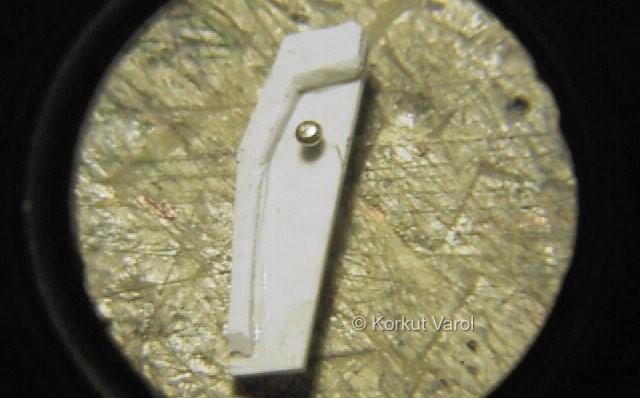
|
| I
glued the back panel to the door as shown. Now I will manufacture the
striker
plate. |
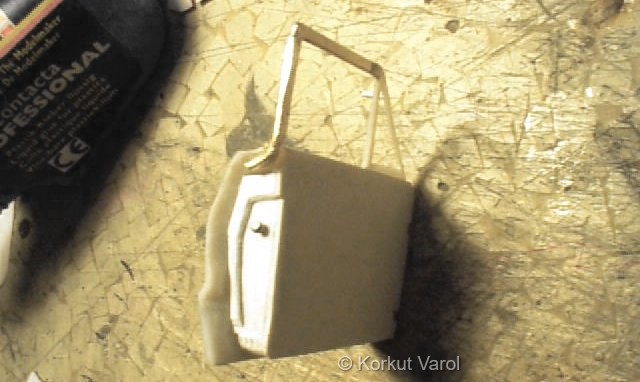
|
| I
cut the middle and outer layers first, and glued them. The outer layer
is now big enough to be held by hand. |
|
| Cutting
off the excess plastic and glueing in the backing plate ends the
striker
plate construction. |
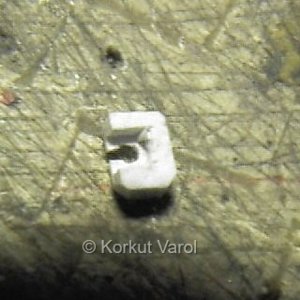 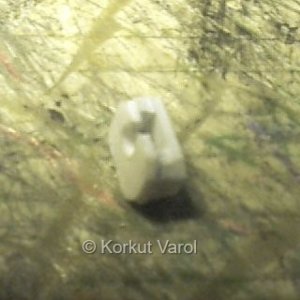
|
| The
striker plate is placed on the lock pin. I will glue the striker
plate's
back, and close the door as installed. |
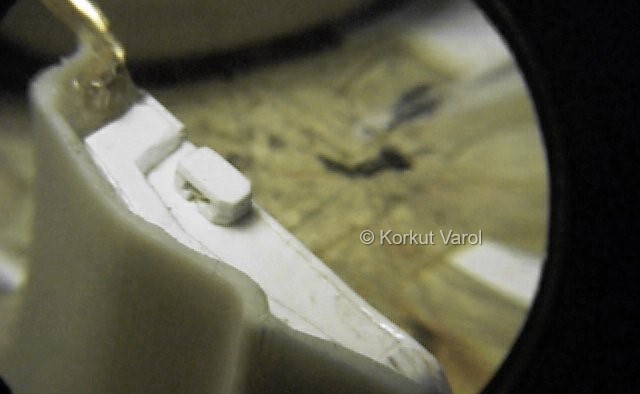
|
| This
is the settling stage of the glued striker plate. The plastic strip in
the front door parting line is to force the assembly, thus the striker
plate, on the B-post. The spring clamp holds the door in line with the
body. |
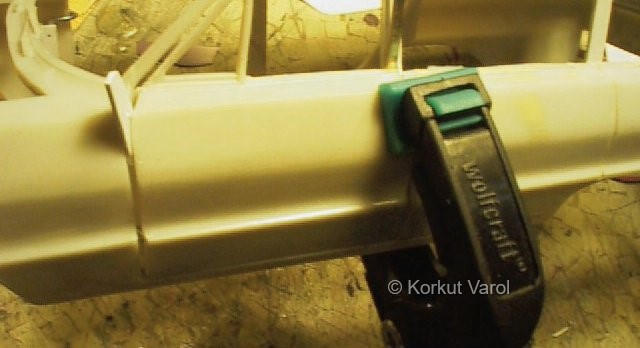
|
| Here
is the opened view of the striker plate after the door is opened. I did
this for overcoming a challenge, and below you will find an easier but
-I think- a better way to make a door lock. |
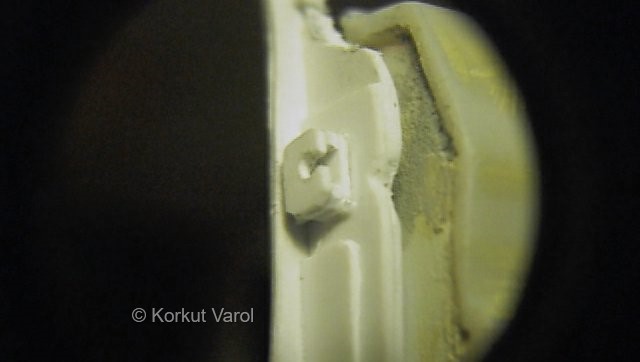
|
| Dec.
31, 2003:
I thought
of installing a magnet for the striker plate. I thought of opening up
an
old DC motor and utilize its magnet. I was thinking if I could machine
a magnet like a striker plate. I opened a motor and what I saw----- The
magnet was a rubber magnet! I could simply cut it with a #11 blade! A
good
New Year Gift!
|
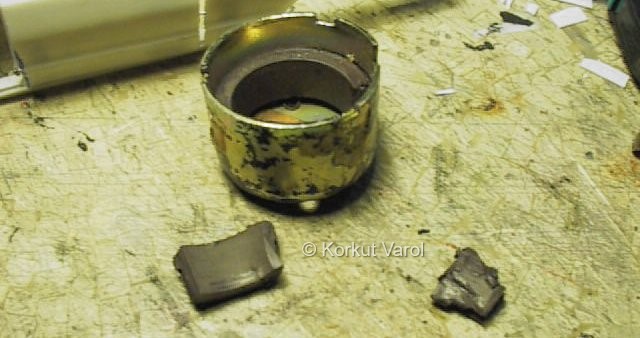
|
I
cut the striker plate and fixed it on the B-post of the right side with
CA glue. Looks OK, eh?
The
slot is just for looks, it will not have a function of physically
housing
the lock pin. |

|
The
functional counterpart of the door lock is actually another magnet,
salvaged
from an old CD-ROM drive. These magnets are really strong.
But
since the rubber magnet was cut to so small size, its magnetic capacity
was also reduced and the attraction force was not as good as I
expected. |
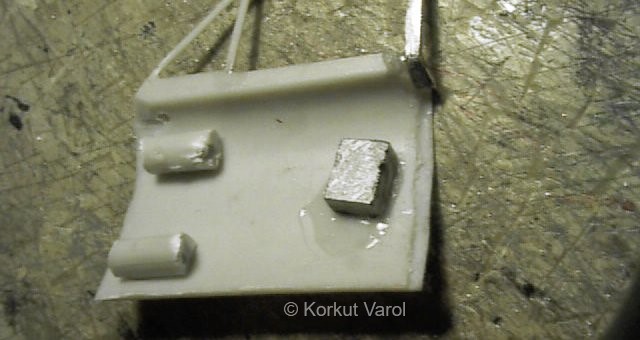
|
| So
I glued a piece of galvanized steel sheet at the bottom of the B-post.
Now the pulling force was satisfactory. |
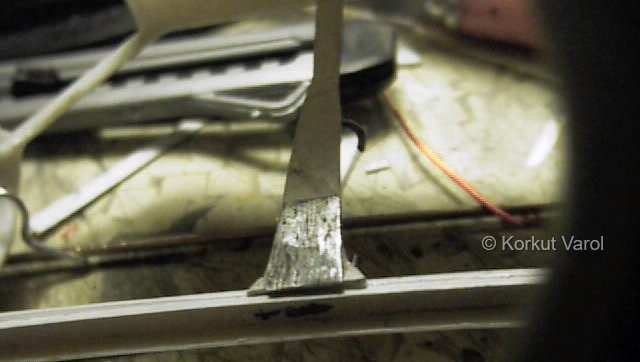
|
| Although
not being effective as a magnet, I still manufactured the rear door
striker
plate from rubber magnet too. |
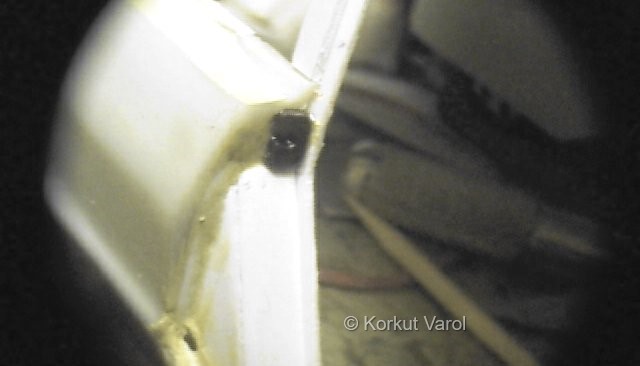
|
| ..but
I put a big one right at its back! |
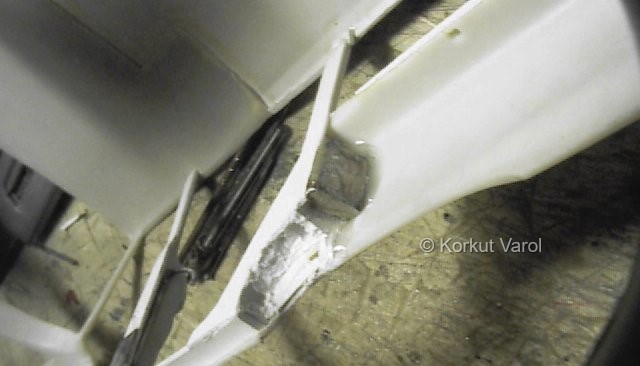
|
| Jan
03, 2004:
Just
an interruption to the door related topics; the rear wheel wells were
too
wide for the rear seat to fit in. So I cut out the marked portions...
|
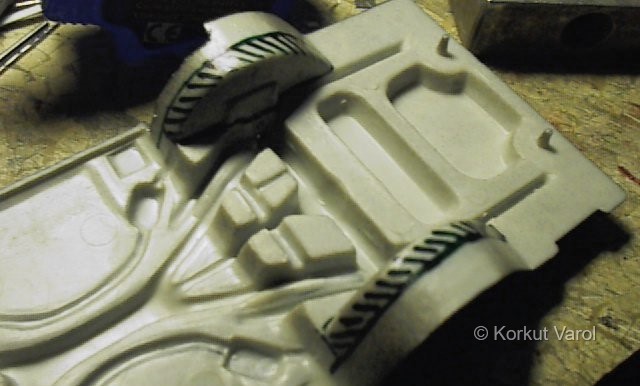
|
| ...and
widened the space between the wheel wells. |
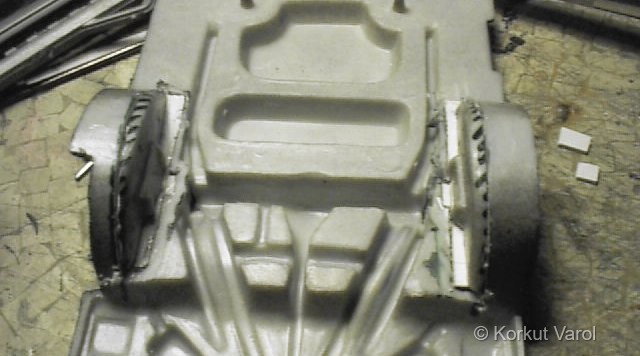
|
| Back
to door business, I manufactured the rear door window frame from
hammered
and filed copper wire, joining the corners with solder. |
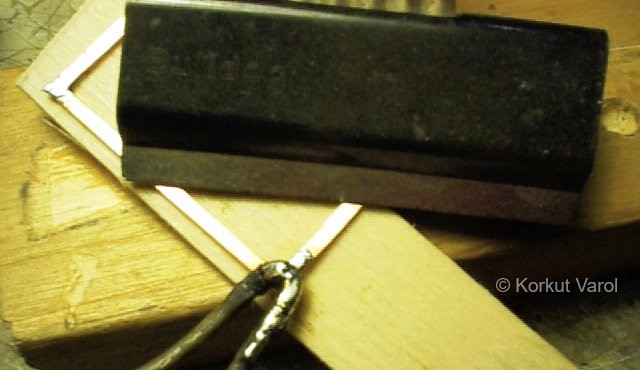
|
| I
shaped the ends of the frame to go within the door and not to clash
with
the hinge and lock details. I had to separate the inner door panel that
I had fitted in before, to make measurements and adjustments. In the
photo
below, you see the frame being held in place and pre-fixed with two
epoxy
glue droplets on the door panel. After this cured, I assembled the door
inner panel again, and applied more epoxy glue so that the frame would
be firm in its place. |
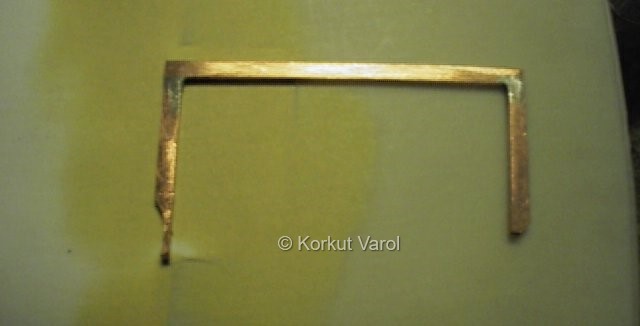
|
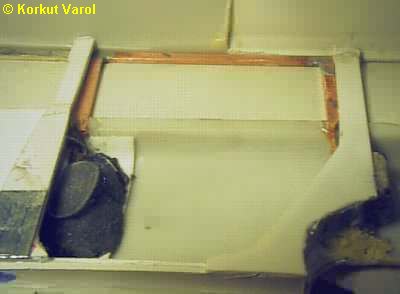
|
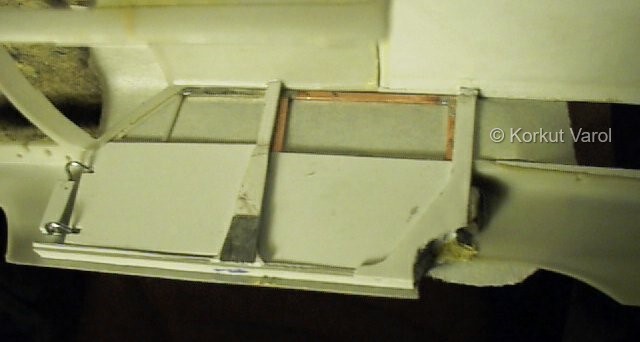
|
| So
now the right side doors are finished too. |
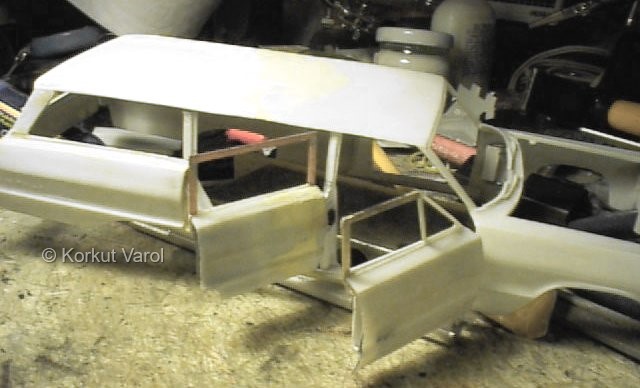
|
| Jan
04, 2004:
I cut
strips for all door openings, to serve as the upper flanges that the
door
frames would rest on.
|
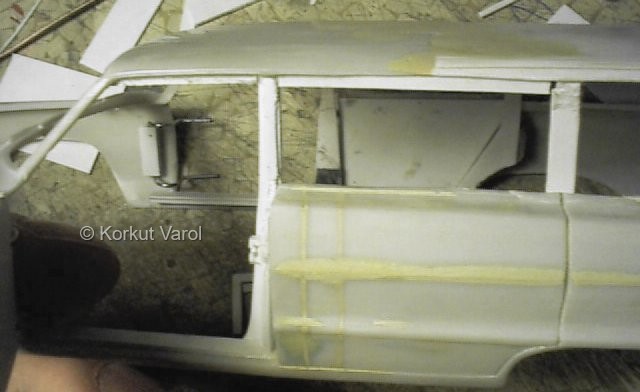
|
| I
cut the rear left door frame from styrene sheet |
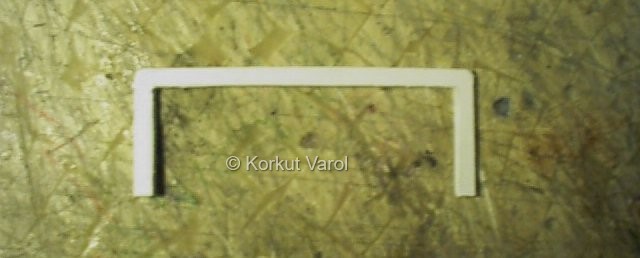
|
| and
glued it in place, also formed the rearmost side window frames for both
sides. |
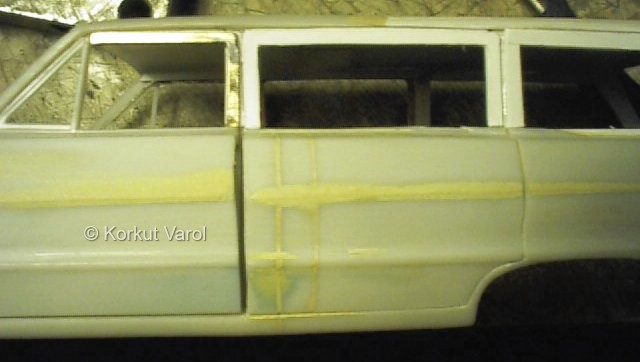
|
| I
then manufactured the rear window frames from styrene sheets. Also, I
had
to correct the previously wide opened rear light holes by adding
styrene
parts and re-scribe the back door parting lines. |
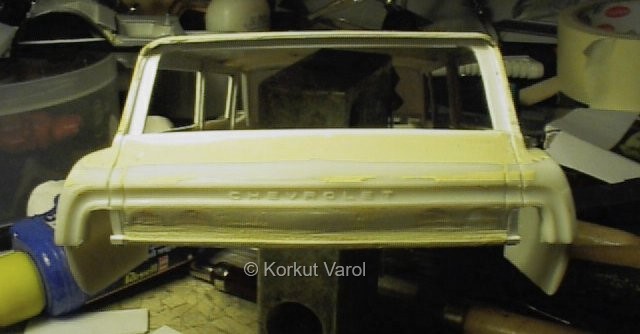
|
|
|
|
|

|
 .. ..
|



